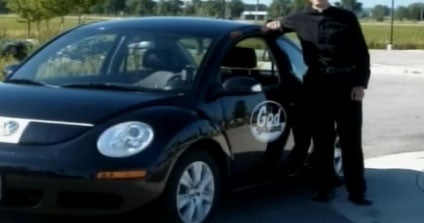In an intriguing legal tussle that juxtaposes technology and theology, the conflict between Geek Squad and God Squad has garnered attention, sparking discourse on trademark infringement, branding, and the intersection of commercial and spiritual realms. The Geek Squad, a subsidiary of Best Buy, is synonymous with tech support and computer repair services. Conversely, the God Squad, a group focused on providing spiritual guidance and support, found itself at the center of a contentious trademark dispute.
The primary contention arose when God Squad alleged that the Geek Squad’s logo bore a striking resemblance to its own branding elements. This resemblance prompted the God Squad to issue a cease-and-desist letter, claiming that the similarity could lead to consumer confusion regarding the nature and affiliation of the two entities. Such instances of trademark disputes are not uncommon; they illuminate the complexities involved in establishing a distinctive brand in a world increasingly saturated with similar logos and slogans.
Trademark law is designed to protect brand identities, ensuring that consumers can easily identify the source of goods and services. The essence of the law predicates that a trademark must be distinctive, non-descriptive, and not confusingly similar to existing trademarks. In this case, the God Squad argued that the overlap in visual and conceptual branding might not only mislead consumers but also dilute the sanctity of their religious mission.
However, Geek Squad’s retort was to assert that their brand is firmly entrenched in the realm of technology services. They contended that the disparity in the nature of services offered by the two squads was sufficient to mitigate any likelihood of confusion among consumers. Thus, they maintained that the two entities occupy disparate niches in the market, one secular and the other spiritual, ultimately justifying their use of a similar logo.
This dispute encapsulates a larger phenomenon observed in the trademark arena—wherein similar logos or names can evoke vastly different interpretations based on context. It poses critical questions regarding the boundaries of intellectual property, especially when the fundamental purpose and message of a brand diverge so fundamentally.
Moreover, the implications of such legal conflicts extend beyond mere logo usage. They pose philosophical quandaries about identity, expression, and the commercial exploitation of cultural or religious symbolism. As brands continue to intersect with social values, the stakes become significantly higher, raising far-reaching considerations about respect for intellectual property and the potential ramifications on brand integrity.
As this case unfolds, it highlights the imperative need for diligent legal scrutiny in the branding process, urging organizations to delineate their identities thoughtfully while cognizant of existing trademarks. The outcome will likely reverberate within both the tech support and spiritual guidance communities, possibly setting a precedent for future disputes where technology and belief systems converge.
